The Hollywood Bowl is a renowned amphitheater and public park nestled in the Hollywood Hills of Los Angeles. Celebrated for its exceptional acoustics and stunning setting, it has been consistently ranked among the top live music venues in the United States, with Rolling Stone magazine naming it one of the 10 best in 2018. Recognized for its cultural and historical significance, the Hollywood Bowl was added to the National Register of Historic Places in 2023, solidifying its place as an iconic landmark in the entertainment world.
1919: Site Selection by William and H. Ellis Reed
In 1919, William Reed and his son H. Ellis Reed selected Daisy Dell in Bolton Canyon as the site for the Hollywood Bowl. They were tasked by the Theatre Arts Alliance to find a suitable location for outdoor performances.
November 11, 1921: Women's World Peace Concert and First Sunrise Service
On November 11, 1921, the Hollywood Bowl hosted the Women's World Peace Concert and the first Sunrise Service, marking some of its earliest major events.
1921: Children perform Sibelius' Finlandia
In 1921, children were invited to perform Sibelius' Finlandia at community events with the Los Angeles Philharmonic and the Hollywood Community Chorus.
July 11, 1922: Official Opening of The Bowl
The Bowl officially opened on July 11, 1922, with the construction of its first stage, consisting of wooden platforms and canvas.
1922: Construction of stage
In 1922, proceeds from early events at the Hollywood Bowl were used to finance the construction of a new stage.
1923: Construction of seating
In 1923, proceeds from early events at the Hollywood Bowl were used to finance the construction of new seating.
1924: Backdrop added to stage
In 1924, a backdrop was added to the stage at the Hollywood Bowl, enhancing the visual experience for performers and audiences.
1924: Land deeded to County of Los Angeles
In 1924, the land on which the Hollywood Bowl sits was officially deeded to the County of Los Angeles.
1925: Fritz Reiner migrated to the orchestra
In 1925 Fritz Reiner migrated to the orchestra from the Cincinnati Symphony.
1925: "Bowl Orchestra" performed
In 1925, the "Bowl Orchestra" performed at the Hollywood Bowl, marking one of the early house orchestras associated with the venue.
1926: Maud Allen performed during the production of the Pathétique Symphony
In 1926, ballet dancer Maud Allen performed during the production of the Pathétique Symphony by Tschaikowsky under the direction of Alfred Hertz. Ernest Belcher arranged a ballet scene for Bowl Dedication Night, and dancers from the Belcher Ballet School performed the Beautiful Galatea, Enchanted Hour, and Venesive Festival.
1926: Front arch incorporated in 2004 shell
In 1926, the front arch was first constructed and was incorporated into the new shell constructed in 2004.
1926: Original band shell designed by Allied Architects Association
In 1926, the original band shell designed by the Allied Architects Association, was considered unacceptable visually and acoustically.
1927: Elsa Alsen performed Santuzza in Cavalleria
In 1927, Elsa Alsen performed Santuzza in Cavalleria.
1927: Second band shell designed by Lloyd Wright
In 1927, Lloyd Wright designed the second bandshell with a pyramidal shape and southwest Indigenous architecture design. Its acoustics were regarded as the best in Bowl history, but its appearance was considered too avant-garde and was demolished at the end of the season.
1927: Ruth St. Denis and Ted Shawn performed solo dances
In 1927, ballet Dancers Ruth St. Denis and Ted Shawn performed solo dances under direction of Hertz. Ruth St. Denis and Ted Shawn raised their arms to point at the California Stars during the Russian Ballet sur le point at the Hollywood Bowl.
1927: Ring-shaped structure within the shell incorporated in 2004 shell
In 1927, the ring-shaped structure within the shell was first constructed and was incorporated into the new shell constructed in 2004.
1928: Andreas Pavley and Serge Oukrainsky performed at the Hollywood Bowl
In 1928, Andreas Pavley, a tenor, and Serge Oukrainsky, a ballet dancer, performed at the Hollywood Bowl. Oukrainsky performed in the ballet La Fete a Robinson alone after Pavley's death.
1928: Third wooden bandshell designed by Lloyd Wright
In 1928, Lloyd Wright designed a wooden bandshell with the familiar concentric ring motif, covering a 120-degree arc, and designed to be easily dismantled. However, it was neglected and ruined by water damage.
1928: "Hollywood Bowl Orchestra" made a live recording
In 1928, the "Hollywood Bowl Orchestra" made a live recording, contributing to the early musical history of the Hollywood Bowl.
1928: Broad profile incorporated in 2004 shell
In 1928, the broad profile was first constructed and was incorporated into the new shell constructed in 2004.
1929: The Allied Architects built the shell that stood until 2003
For the 1929 season, the Allied Architects built the shell that stood until 2003, using a transite skin over a metal frame.
1929: Norma Gould and her Los Angeles dancers performed
In 1929, Norma Gould brought her Los Angeles dancers to the bowl to perform during Schubert's Unfinished Symphony and Tschaikowsky's Nut-Cracker Suite.
1929: Opera Carmen Performed
In 1929, a concertized form of the opera Carmen was performed by Alice Genytle, Paul Althouse and Alexander Kisselburgh. The same cast later performed moments from the opera Tannhäuser.
1929: Original bandshell construction
In 1929, the Hollywood Bowl's distinctive bandshell, composed of concentric arches, was constructed using a transite skin over a metal frame. This structure would remain in place until 2003.
1929: Original construction of bandshell
In 1929, the construction of the bandshell before it was demolished in 2003.
1929: Construction of original shell
In 1929, the original shell was built that would be replaced in 2003.
1929: White finish and general lines incorporated in 2004 shell
In 1929, the white finish and general lines was first constructed and was incorporated into the new shell constructed in 2004.
August 1930: Michio Ito performed in the Russian Ballet Prince Igor
In August 1930, Michio Ito brought five dancers to the Hollywood Bowl to perform in the Russian Ballet Prince Igor.
1931: Adolph Bolm Performed
In 1931, Adolph Bolm performed at the Bowl for Debussy's Les Nuages. He also performed The Spirt factory, later called the Mechanical Ballet, composed by Alaxander Mosolov. Dancers Elise Reiman and Robert Bell also performed in the Mechanical Ballet.
1931: Los Angeles Grand Opera performed segments of Marouf
In 1931, Los Angeles Grand Opera performed segments of Marouf. Other early Hollywood Bowl appearances of opera include Carmen, Aida, and Shanewis.
1932: Samson and Delilah was performed by Paul Althouse, local singers, the Belcher Ballet and the Civic Chorus
In 1932, Samson and Delilah was performed by Paul Althouse, local singers, the Belcher Ballet and the Civic Chorus in concert style.
1932: Belcher's ballet performed in Greek Costumes as a dedication to the Olympic-Games Athletes
In 1932, the Belcher's ballet was performed in Greek Costumes as a dedication to the Olympic-Games Athletes. Alexis and Theodore Kosloff performed the ballet Scheherazade with dancers from Hollywood and the Klosloff Dancing School. In 1932, Theodore Klosloff performed the Flower. Also in 1932, the ballet Chopiniana was performed.
1934: Nina Koshetz and Nelson Eddy perform in Carmen
In 1934, Nina Koshetz performed Carmen and Nelson Eddy sang Escamillo in the opera Carmen. Koshetz also sang the lead in Tschaikowsky's Eugene Onegin.
1935: Lohengrin performed with Jeanette Vreeland and Dan Gridley
In 1935, Lohengrin was performed, with Jeanette Vreeland performing Elsa and Dan Gridley performing Lonhengrin.
1940: Muse Fountain designed by George Stanley installed
In 1940, Sculptor George Stanley, designer of the Oscar statuette, designed the Muse Fountain which has stood outside the Hollywood Bowl's main entrance since 1940.
1945: Leopold Stokowski formed the Hollywood Bowl Symphony Orchestra
In 1945, Leopold Stokowski formed the Hollywood Bowl Symphony Orchestra. He drew members from the Los Angeles Philharmonic and film studio orchestras, making 78 rpm recordings for RCA Victor during his two seasons (1945–46) before returning to New York.
1945: Formation of the Hollywood Bowl Symphony Orchestra
In 1945, Leopold Stokowski formed the Hollywood Bowl Symphony Orchestra. The orchestra drew its players from among members of the Los Angeles Philharmonic and various film studios orchestras.
1946: Leopold Stokowski's final season as music director
1946 was Leopold Stokowski's final season as music director before he returned to New York.
1951: Hollywood Bowl Closed Due to Financial Crisis, Reopened by Dorothy Chandler
In 1951, a financial crisis led to the closure of the Hollywood Bowl during its summer season. Dorothy Chandler chaired a committee and organized a series of fundraising concerts to successfully reopen it.
1953: Reflecting pool added in front of the stage
In 1953, a reflecting pool was added in front of the Hollywood Bowl stage, enhancing the visual aesthetic. It remained until 1972.
1953: Partnership with Los Angeles County Metropolitan Transportation Authority
In 1953, the Hollywood Bowl partnered with the Los Angeles County Metropolitan Transportation Authority (formerly Southern California Rapid Transit District) to provide green transportation alternatives, such as shuttle buses.
1972: Reflecting pool removed in front of the stage
In 1972, the reflecting pool was removed, which was added in 1953, from in front of the Hollywood Bowl stage.
1984: Tea Room Opening
In 1984, the Tea Room opened at the bottom of Peppertree Lane, which was formerly known as the Tea Room.
1991: Hollywood Bowl Orchestra Re-launched
In 1991, the Hollywood Bowl Orchestra was re-launched by the Los Angeles Philharmonic Association under principal conductor John Mauceri.
1996: Edmund D. Edelman Hollywood Bowl Museum Rebuilt
In 1996, the Tea Room was rebuilt as the Edmund D. Edelman Hollywood Bowl Museum. It features many historical exhibits, including Summer Nights: Jazz at the Bowl, Hollywood Bowl: Music For Everyone, Postcards from the Bowl, Beatles at the Bowl, Concert Programs and Live from the Bowl.
September 2003: "Bugs Bunny On Broadway" final Los Angeles Philharmonic concert in the 1929 shell
In September 2003, "Bugs Bunny On Broadway" was the final Los Angeles Philharmonic concert to be performed in the 1929 shell before its demolition started the following day.
2003: The shell built in 1929 stood until 2003
For the 2003 season, the shell built in 1929 stood until this year.
2003: Original bandshell replaced
In 2003, the original bandshell that was built in 1929 was replaced.
2003: Replacement of the 1929 shell with a new shell.
Shortly after the end of the 2003 summer season, the 1929 shell was replaced with a new, acoustically improved shell.
2004: New bandshell debut
In 2004, the new and larger bandshell debuted for the season.
2004: Debut of new shell
In the 2004 summer season, the new shell made its debut with an acoustically improved design.
2004: New shell design elements
The 2004 shell incorporates design elements of the 1926 shell, the 1928 shell, and the 1929 shell. Additionally, the ring-shaped structure within the shell, supporting lights and acoustic clouds, echoes a similar structure in the 1927 shell. During the 2004 season, a white curtain was hung at the back due to the unfinished back wall.
2005: Removal of white curtain
Beginning with the 2005 season, the white curtain at the back of the shell was removed to reveal the finished back wall.
2006: John Mauceri tenure ends
In 2006, John Mauceri finished his tenure as the principal conductor of the Hollywood Bowl Orchestra.
2013: Inspiration for Vinewood Bowl in Grand Theft Auto V
In 2013, the Hollywood Bowl heavily inspired the creation of the Vinewood Bowl, which appears in the video game Grand Theft Auto V.
2018: Named one of the 10 best live music venues
In 2018, Rolling Stone magazine recognized the Hollywood Bowl as one of the 10 best live music venues in the United States.
2023: Listed on the National Register of Historic Places
In 2023, the Hollywood Bowl was officially listed on the National Register of Historic Places, recognizing its historical significance.
2024: Parking Changes at Hollywood Bowl
In 2024, the Hollywood Bowl reduced on-site parking, introduced a rideshare parking lot, increased parking fees, and offered more shuttle services.
Mentioned in this timeline
The United States of America is a federal republic located...
California is a U S state on the Pacific Coast...
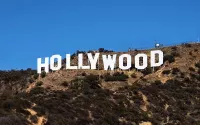
Los Angeles is the most populous city in California and...
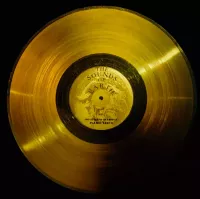
Music is a cultural universal involving the arrangement of sound...
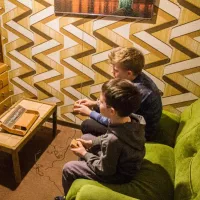
A video game is an electronic game involving user interaction...
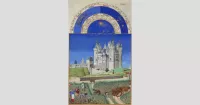
September is the ninth month of the year in the...
Trending
5 months ago Senator concerned JetBlue and United partnership may negatively affect market competition.
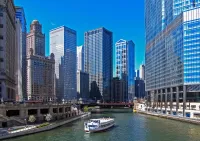
2 months ago Noem Rejects Pritzker's Request to Pause ICE Operations in Chicago for Halloween.
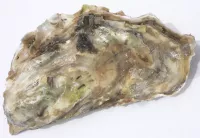
Oysters are salt-water dwelling molluscs with two shells bivalve They are found in marine or brackish water Some oyster species...
24 days ago Space Weather Monitoring: NOAA Reports, Saskatchewan Researching Storms, Local Impact Variances Noted.

2 months ago QuantumScape's ascent, Corning deal, and Murata partnership signal future battery tech.
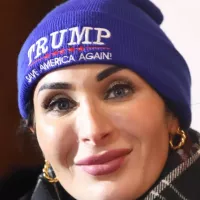
1 month ago Trump Withdraws Nominee for Top IRS Lawyer Amidst Loomer Controversy.
Popular

Ben Shapiro is a prominent American conservative political commentator media...

XXXTentacion born Jahseh Dwayne Ricardo Onfroy was a controversial yet...

Candace Owens is an American conservative political commentator and author...

William Franklin Graham III commonly known as Franklin Graham is...
The Kennedy Center Honors are annual awards recognizing individuals and...

Tucker Carlson is an American conservative political commentator known for...
